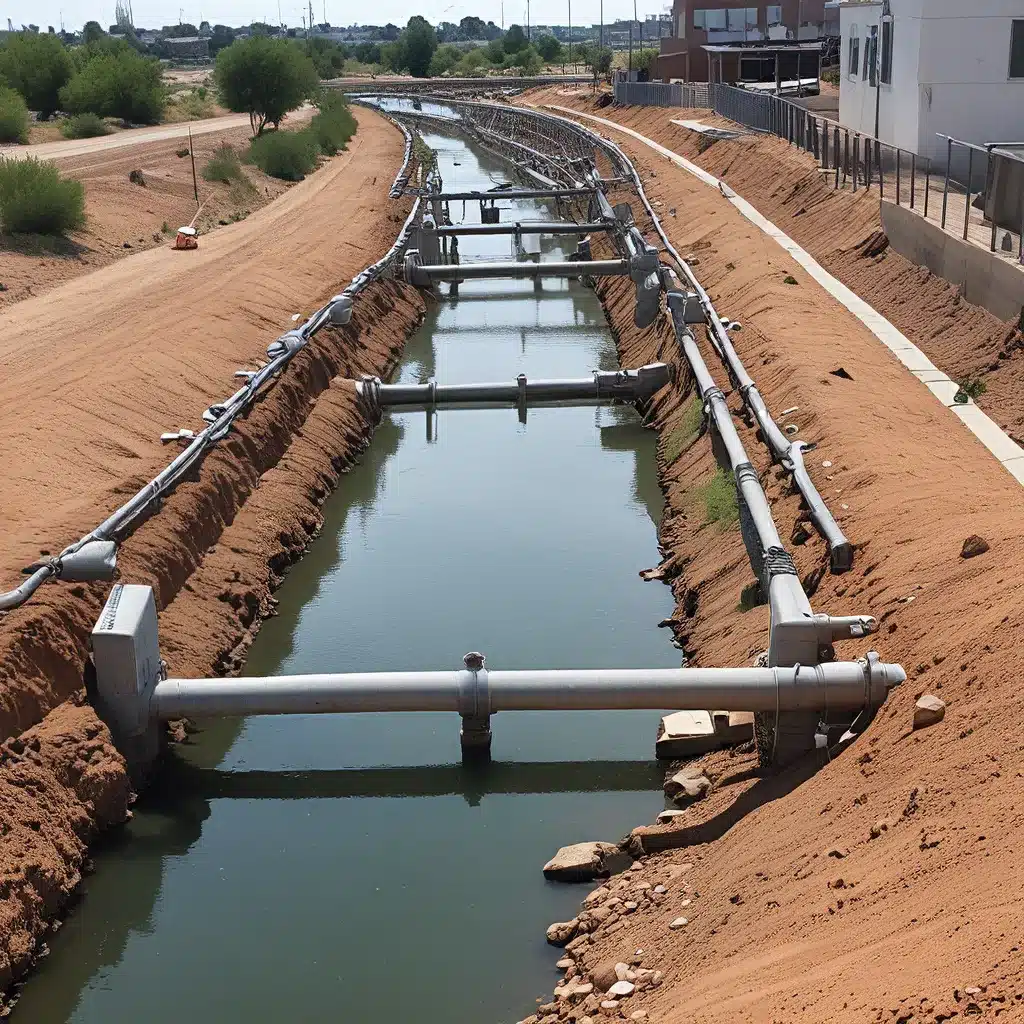
Plumbing the Depths of Water’s Future
Ah, water – the elixir of life, the foundation of civilization, and the lifeblood of our planet. As we navigate the ever-evolving landscape of the 21st century, one thing is crystal clear: the way we design, manage, and interact with our water infrastructure will play a pivotal role in shaping the world we leave behind.
Recent studies have painted a vivid picture of the challenges we face – aging pipes, overburdened treatment plants, and the looming specter of climate change. But amidst the daunting challenges, there lies a glimmer of hope in the form of smart water infrastructure.
Unleashing the Power of Smart Water
Picture this: a world where water flows seamlessly, where every drop is meticulously monitored and managed, and where innovative solutions are the norm, not the exception. This is the promise of smart water infrastructure – a revolution in the way we think about, design, and interact with our most precious resource.
At the heart of this transformation lies a network of sensors, data analytics, and cutting-edge technologies that work in harmony to optimize every aspect of the water cycle. Imagine a system that can detect leaks before they become catastrophic, that can adjust water treatment processes in real-time to address changing demands, and that can even predict and prevent flooding – all with the touch of a button (or, let’s be honest, a few swipes on a smartphone).
The Green Revolution: Embracing Nature’s Gifts
But smart water infrastructure isn’t just about the latest gadgets and gizmos. It’s also about harnessing the power of green infrastructure – an approach that integrates natural elements like wetlands, bioswales, and permeable pavement into the urban landscape. As HNTB’s experts have demonstrated, this innovative approach not only helps manage stormwater and mitigate flooding, but it also creates vibrant public spaces and revitalizes urban ecosystems.
Consider the case of the historic West Bottoms in Kansas City, Missouri. Once an area plagued by combined sewer overflows and constant flooding, this neighborhood has been transformed thanks to the CID Green Infrastructure Project. By implementing a suite of green infrastructure solutions – from permeable pavers to bioswales – the city has not only reduced the strain on its aging water systems, but it has also created a verdant oasis that serves as a gathering place for the community.
Forging Partnerships, Building the Future
Of course, realizing the full potential of smart and green water infrastructure requires a collaborative effort. As the city of Middletown, Connecticut, has demonstrated, this means forging partnerships with a diverse array of stakeholders – from government agencies and utility providers to private developers and community groups.
In Middletown, the city is leveraging a $55 million bond measure to tackle a range of infrastructure challenges, from upgrading aging wastewater treatment facilities to revitalizing the city’s riverfront. By taking a holistic approach and engaging the community every step of the way, Middletown is poised to transform its water infrastructure into a model for 21st-century sustainability.
Embracing the Uncertainty, Shaping the Future
Of course, as with any ambitious undertaking, the path to smart and green water infrastructure is not without its challenges. There are questions to be answered, uncertainties to navigate, and trade-offs to be made. But that’s precisely what makes this journey so exciting – the opportunity to shape the future, to innovate, and to leave a lasting legacy for generations to come.
As we stand on the precipice of this water revolution, I can’t help but feel a sense of both excitement and humility. After all, the future of our water infrastructure is not ours alone to decide; it’s a collective responsibility, one that requires all of us to think creatively, collaborate fearlessly, and embrace the power of nature’s gifts.
So, let’s dive in – let’s Inland Waters explore the depths of this challenge, uncover the innovative solutions, and redefine the way we interact with our most precious resource. The future of water is ours to design – let’s make it a future that quenches our thirst for a more sustainable, resilient, and vibrant world.


